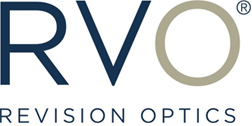“Are these cataracts?”
“I’m only 45. How could I be losing my sight already?”
“I’ll just be better about wearing sunglasses and my vision will come back.”
These are common misconceptions about presbyopia, which is probably what is happening in the above concerns. Though you should consult with your doctor to be sure, presbyopia is a condition that affects millions of adults and is a natural part of the aging process.
Presbyopia is age-related near vision loss where the elasticity of the lens in the eye begins to stiffen, making it difficult to focus up close (this is why you have to bring your readers to date night). But have no fear, we are going to help clear up the misconceptions around presbyopia!
So, let’s get to the bottom of some of the most common facts & myths about presbyopia:
1. “I have perfect 20/20 vision; I won’t get presbyopia.”
FALSE – It’s natural and happens to everybody! Even those who have had LASIK in the past are still likely to develop presbyopia as time goes by.
2. “I just celebrated my 43rd birthday and have never had vision problems, but lately it’s been hard for me to read my text messages. Could this be presbyopia?”
TRUE – Presbyopia affects about 111 million adults in the United States, beginning around the age of 40.
3. “Farsightedness and presbyopia are basically the same.”
FALSE – Though both conditions are concerned with a difficulty seeing up close, the two are quite different. Farsightedness, or hyperopia, is a vision problem that exists due to the shape of the eyeball; someone with hyperopia has a shorter than normal eyeball. Whereas presbyopia is a natural condition that develops with age. It is the stiffening of the lens, which then makes it more problematic to see up close.
4. “Getting LASIK surgery will cure my presbyopia.”
FALSE – While LASIK is a wonderful option to correct astigmatism, myopia (nearsightedness), and hyperopia (farsightedness), it is not as effective to correct presbyopia.
Monovision LASIK uses an excimer laser to correct one eye for near vision and the other eye for distance vision. Monovision LASIK treatment may help patients to see clearly both far away and close up without glasses or contact lenses. If a patient can see well for far distance without glasses or contact lenses, only one eye will be treated with LASIK to enable near vision. Patients may require another treatment if results are not satisfactory. Other potential complications involved with the LASIK procedure, include dry eyes and visual symptoms.
Because presbyopia is the natural change in elasticity and flexibility of the lens due to age, LASIK isn’t as effective because it cannot stop the aging process, and even eyes that have undergone LASIK in the past are still susceptible to presbyopia. For these reasons, there are more effective treatment solutions for presbyopia.
Want to learn more about The Raindrop® Near Vision Inlay? Find a Raindrop specialist to schedule your consultation today.

